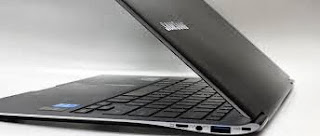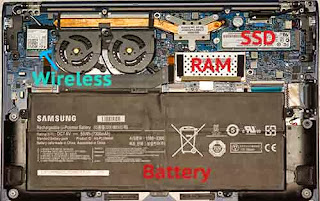Apple iPhone 5s is no exception to the delightful gadget experience we've come to expect from Apple. iPhone 5s is pre-loaded with iOS 7, Apple's latest OS for mobile devices, and though the icons and minimalist style are at first shocking, day-to-day operations remain familiar. It's not easy to change things so much while maintaining continuity (just ask Microsoft, re: Windows 8). Apple added new and much needed features like real webOS style multi-tasking instead of a kludge, an improved notification center and access to quick settings via a swipe gesture. Watch our iOS 7 Walkthrough video below to learn more about the OS.

The iPhone 5s is now available in three colors: Space Gray with a black face that's even inkier black than the iPhone 5, silver with a white face and gold with a white face. The gold actually looks lovely in person and is more of a tasteful champagne color. At launch gold was the hardest to obtain, so Apple had to ramp up production by 30%. The iPhone 5s still has a 4" Retina Display, 4G LTE, good call quality and data speeds, dual band WiFi 802.11n, Bluetooth 4.0, a GPS with GLONASS, 1 gig of RAM and 16/32/64 gigs of storage, but there are several important changes under the hood. There's a wickedly fast Apple A7 dual core CPU that's kicking the Qualcomm Snapdragon 800 in synthetic benchmarks, front and rear cameras with larger pixels for better low light photography and the new Touch ID fingerprint sensor. The new M7 motion processor tells your iPhone to stop searching for WiFi hotspots when driving. It can switch maps from driving to walking directions if your speed drops for a long enough period of time, and it could be handy for fitness apps in the future. For an "s" release, the changes are fairly significant even if the phone looks nearly identical to the iPhone 5 it replaces.
The iPhone 5s is available on all major US carriers and an unlocked version will be forthcoming for use on any GSM carrier. The AT&T, Verizon and T-Mobile are the same model, but are locked to their respective carriers with the exception of Verizon (Verizon had to agree to sell their phones unlocked due to an agreement with the US government in order to gain 700MHz spectrum). Sprint uses a different version from the other three carriers.
Retina Display Redux

This is the same 4" Retina Display running at 1136 x 640 resolution with 326 PPI pixel density. It has the same 500 nits of brightness and 800:1 contrast ratio as the outgoing iPhone 5 and the new iPhone 5c. Regardless of which you buy, you're getting the same display. The good news is that Apple's iPhone display is superb with IPS viewing angles, very good color saturation, extreme brightness and outdoor viewability. The bad news? It's still 4 inches. In a world where HTC, Motorola and Samsung's Android smartphones with "Mini" in their name measure 4.3", the iPhone 5s display is starting to look like a postage stamp. A colorful, sharp and bright postage stamp, but it's still too small to really enjoy watching movies or view desktop web pages comfortably. Yes, the small display helps keep the phone small and light. It also improves battery life. But if we don't see something larger and higher resolution on the iPhone 6, then I will start to worry about Apple as a company (note: I'm not the least worried about Apple right now).
Design iPhone 5s
This won't be long: it's the iPhone 5 with a dual LED True Tone flash on the back and slightly wider side chamfers. The colors have obviously changed with the previous black model replaced by Space Gray (gunmetal) and gold as a new offering. The silver model looks like the iPhone 5 white model. The Touch ID sensor on the front replaces the standard home button and it gets a contrasting metal trim ring on the white and gold models (it's black on the Space Gray model). The phone weighs just 3.95 ounces, and is lighter than the iPhone 5c. It's put together with insane precision: there's nary a seam or gap to bother OCD types. It looks and feels expensive. Heck, it is expensive. The body is made of aluminum with glass insets top and bottom on the back for antenna reception. As Steve Jobs intended, it's still the Leica of smartphones.
Performance iPhone 5s
Not that the iPhone 5 felt slow, but the iPhone 5s makes it seem obsolete thanks to the new Apple A7 CPU that benchmarks twice as fast. We sometimes fault Android for chasing feeds and speeds rather than features that really matter, and Apple's equally guilty here. Not to come down hard on a company that's made this insane kind of processing leap; that's great. It's just not the first thing you'll notice when using the phone because the A6 hadn't yet grown long in the tooth. That said, iOS app developers are a crafty and creative bunch, and I'm sure they'll find use for all those CPU and GPU cycles, especially when it comes to 3D games. The new A7 will likely be more interesting in the iPad 5 since that tablet has become a go to device for mobile gaming and it sports an extremely high resolution display that demands more from the processor and graphics. I am impressed that Apple manages to get so much performance from the A7 when it's clocked at just 1.3GHz and has two cores. Lesson learned: clocks speeds and the number of cores doesn't always indicate performance levels. The 2.26GHz Snapdragon with four cores doesn't beat the A7 in benchmarks.
Where will you notice faster CPU? HDR photos are quick to capture and process. The phone can easily handle switching between slo-mo and standard motion video recording. Big games launch up to twice as fast.
Benchmarks iPhone 5s
Geekbench 3: 1363 single core / 2404 multi-core
3DMark, Ice Storm test (extreme): 9951 (graphics 10,968, physics 8050). Demo: 47 fps
Sunspider: 422
Camera iPhone 5s
Both the front 1.2MP FaceTime camera and rear 8MP iSight camera get bigger pixels (1.5u vs. the iPhone 5 and 5c's 1.4u on the rear iSight camera) for capturing more detail and color with less noise, particularly in low light. This is the same route HTC went with the HTC One and its 4MP equivalent rear camera. The One uses even larger pixels, but the camera resolution is half the conventional low end norm for camera phones these days, and that hurts when using the photos for larger placements on a web page or when printing. Apple went with the right balance of megapixels (we're not giving up any compared to the iPhone 5) vs. pixel size to please most folks. The rear lens is also faster: f/2.2 vs. the iPhone 5 and iPhone 5c's f/2.4 lens. The iPhone 5s uses a 5 element lens (made of plastic) and it has digital image stabilization (we'd love to see Apple move to optical image stabilization, but there's probably not enough room in the iPhone's small chassis). Lastly, the True Tone flash is a combo of one white and one amber LED flash that improves color balance when doing flash photography. In practice, it has improved flash photos in our tests.
Are photos better? Markedly so, and that's impressive since the iPhone 5, despite the lack of in-camera settings and features, was one of the better shooters among smartphones. Colors and exposure are the standouts, particularly in low light scenes. Details like our cat's fur in a dim room are impressive and there's less noise. Nighttime photography is particularly improved: photos that were mostly murky black on the iPhone 5 now have content. I suspect the camera will be one of the most popular improvements.
The front camera is also improved, and FaceTime video chats no longer look like blocky impressionism. Our video chat partners could see strands of hair and the sharply lined rim of eyeglasses, and colors are improved as well. Both front and rear cameras have backside illuminated sensors and they can record video. Unlike the Samsung Galaxy S4 and LG G2, you can't record using front and rear cameras simultaneously. You can shoot photos while recording video, as a consolation.
iOS 7 brings new camera features, though the UI is still very simple. You have control over the flash and HDR, a selection of live Instagram-like effects, and there's a slider on the bottom where you can choose from photo, square photo, panorama, video and slo-mo video. Slow motion video is recorded at 720p/120 fps rather than the usual 1080p/30 fps. The beginning and end of slo-mo video play at standard speed, and that makes for a more dramatic effect. Oddly, if you use a USB or WiFi sync to transfer slo-mo videos to your computer, they'll simply play at standard speed. If you upload them to YouTube or email them, the slo-mo is intact. This means you'll have to fudge getting slo-mo videos onto your computer by emailing them to yourself (at least for now). If you AirDrop the videos to other iOS devices, they'll maintain the slow motion feature. Only the iPhone can record slow motion video as of this writing.
Battery Life
Apple slightly increased battery capacity to 1560 mAh on the iPhone 5s. Since the new CPU likely consumes a little more power, we haven't noticed much change from iPhone 5 runtimes. That means the phone is competitive with other smartphones on the market, but it doesn't pull ahead. Again, Apple's insistence on staying with a very small form factor limits them; there's only so much room for a battery inside and the iPhone's is smaller than most big Android phone batteries. Of course, the iPhone 5s doesn't have to power a big 5" display or full HD resolution, so it doesn't need as big a battery.
In a real life setting the iPhone 5s lasted through the day with moderate use that included 30 minutes of gaming, phone calls, push email (including the Gmail app), listening to music with the screen off while streaming to an AirPlay speaker for one hour, watching 40 minutes of HD video and browsing the web using Safari and Chrome. Playing games significantly reduces battery life, and FaceTime video chats can eat through a full charge in 3 hours of actual chat time (the phone gets warm when video chatting too). Beyond that, we averaged the same amount of screen on time as our HTC One, beating out our Samsung Galaxy S4 but not the power-frugal Moto X.
Price: $199 on contract and $649 retail for 16 gig, each storage increment adds $100 to the price.
Website: www.apple.com



































